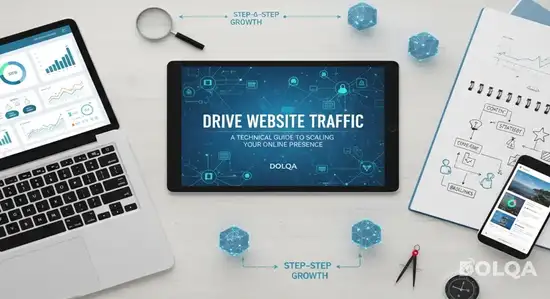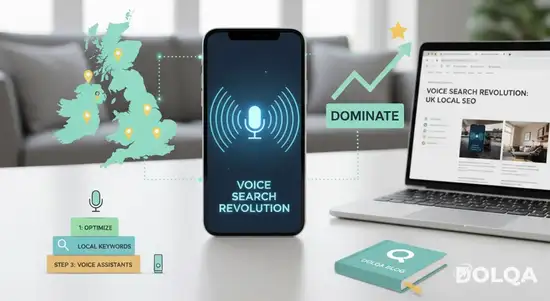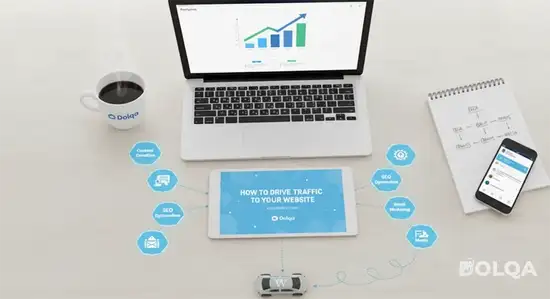Introduction: The Architecture of Digital Visibility
Website traffic represents the lifeblood of any digital property—without visitors, even the most technically sophisticated platform serves no purpose. The fundamental challenge facing businesses and content creators today isn't merely attracting eyes to their pages; it's engineering a systematic, measurable approach to acquiring qualified traffic that converts.
This technical exploration dissects the mechanisms through which websites capture attention in an increasingly saturated digital landscape. We'll examine the structural components of traffic generation: from algorithmic optimization to audience psychology, from technical implementation to strategic content deployment. Picture yourself applying this in real life—each concept here builds upon the previous, creating a comprehensive framework for sustainable growth.
The strategies outlined below aren't theoretical exercises. They represent battle-tested methodologies refined through countless implementations across diverse industries and market conditions.
The Technical Foundation: SEO Strategies That Actually Work
Understanding Search Engine Architecture
Search engines operate on three fundamental processes: crawling, indexing, and ranking. Your primary objective is optimizing for each stage.
Crawling optimization requires clean site architecture. Implement XML sitemaps, eliminate orphaned pages, and maintain logical URL structures. Robots.txt files should grant access to valuable content while blocking resource-intensive or duplicate pages.
Technical SEO imperatives include:
- Page load speed under 2.5 seconds (Core Web Vitals compliance)
- Mobile-first responsive design with proper viewport configuration
- HTTPS implementation with valid SSL certificates
- Structured data markup (Schema.org) for enhanced SERP features
- Canonical URL declarations to prevent duplicate content issues
Keyword Architecture and Semantic Optimization
Effective SEO strategies begin with intelligent keyword research, but successful implementation requires understanding search intent taxonomy. Keywords fall into four categories: informational, navigational, transactional, and commercial investigation.
Deploy a hub-and-spoke content model. Create comprehensive pillar pages targeting high-volume keywords, then develop cluster content addressing long-tail variations. Internal linking between these assets signals topical authority to search algorithms.
LSI (Latent Semantic Indexing) keywords enhance contextual relevance. Rather than repetitive exact-match phrases, incorporate semantically related terms. For a page about "website traffic," naturally include: visitor analytics, bounce rate optimization, conversion pathways, audience acquisition, and engagement metrics.
Content Marketing: Engineering Value Delivery
Strategic Content Development
Content marketing succeeds when it solves specific problems for defined audiences. This requires analytical clarity about who you're addressing and what friction points they experience.
Develop content across multiple formats:
- Long-form technical guides (1,500-3,000 words) targeting featured snippets
- Case studies demonstrating measurable outcomes
- Interactive tools (calculators, assessments, templates)
- Video content optimized for both YouTube search and embedded site engagement
- Infographics designed for social sharing and backlink acquisition
Each content piece should serve multiple strategic purposes: organic search visibility, social distribution potential, email marketing assets, and link-building resources.
Content Distribution Architecture
Creating exceptional content represents only 20% of the equation—distribution comprises the remaining 80%. Implement a systematic distribution framework:
Owned channels: Website blog, email newsletter, YouTube channelEarned channels: Guest publications, podcast appearances, PR placementsPaid channels: Sponsored content, native advertising, promoted posts
Repurpose core content across formats. Transform a comprehensive guide into a webinar, extract social media snippets, create email sequences, and develop slide decks for presentation platforms.
Social Media Marketing: Algorithmic Engagement Tactics
Platform-Specific Optimization
Social media marketing demands platform-native understanding. Each network operates on distinct algorithmic principles and user behavior patterns.
LinkedIn: Prioritize thought leadership content, publish during business hours (Tuesday-Thursday, 8-10 AM), use 3-5 hashtags maximum, engage in comments within the first hour.
Twitter/X: Optimize for conversation threads, leverage trending topics strategically, maintain consistent posting velocity (5-10 times daily), utilize visual media in 80%+ of posts.
Facebook: Focus on community building, leverage Facebook Groups for niche targeting, video content receives 135% greater organic reach than image posts, optimal posting frequency is 1-2 daily.
Instagram: Story content drives profile visits, Reels receive preferential algorithmic treatment, carousel posts generate 1.4x more reach than single images.
Social Listening and Engagement Engineering
Monitoring brand mentions, industry keywords, and competitor activities enables proactive engagement opportunities. Tools like Hootsuite, Sprout Social, or Mention automate this surveillance.
Respond to comments within 60 minutes to maximize algorithmic favor. Pose questions to stimulate conversation—posts with questions receive 100% more comments on average. User-generated content campaigns amplify reach while reducing production costs.
Advanced Traffic Acceleration Techniques
Email Marketing Integration
Email remains the highest-ROI channel for traffic generation. Build segmented lists through strategic lead magnets (templates, tools, exclusive content). Implement automated sequences triggered by specific behaviors.
Optimize subject lines for 40-50 character length. Personalization beyond first names—segment by behavior, preferences, and engagement history. Every email should contain one clear CTA driving traffic to specific landing pages.
Strategic Partnership Development
Collaborate with complementary brands for co-marketing initiatives. Guest blogging on authoritative sites within your niche builds both traffic and domain authority. Podcast guesting positions you before established audiences while generating referral traffic.
Paid Acquisition Channels
While organic strategies build sustainable traffic, paid channels accelerate growth and test messaging. Google Ads provides immediate search visibility. Social media advertising enables granular demographic and psychographic targeting.
Retargeting campaigns convert previous visitors who didn't convert initially. Implement pixel-based tracking to create custom audiences, then serve tailored messaging addressing specific objections or interests.
Measurement and Optimization Framework
Analytics Configuration
Proper measurement begins with correct implementation. Install Google Analytics 4 with enhanced measurement enabled. Configure custom events tracking critical user behaviors: scroll depth, video plays, outbound clicks, form interactions.
Key performance indicators to monitor:
- Organic search traffic volume and trend
- Traffic source distribution
- Landing page performance metrics
- Conversion rate by channel
- Bounce rate and average session duration
- Pages per session
- Returning visitor percentage
Continuous Improvement Methodology
Traffic generation isn't a set-and-forget operation. Implement quarterly content audits identifying underperforming assets for optimization or consolidation. A/B test headlines, meta descriptions, and calls-to-action systematically.
Monitor Google Search Console for keyword opportunities—terms where you rank positions 8-20 represent low-hanging fruit. Create targeted content or enhance existing pages to capture these rankings.
Conclusion: Building Sustainable Traffic Systems
Increasing website traffic demands technical precision, strategic consistency, and analytical rigor. The methodologies outlined here—from foundational SEO strategies through advanced content marketing and social media marketing tactics—create a comprehensive system for sustainable audience growth.
Success doesn't emerge from implementing isolated tactics. It requires orchestrating multiple channels into a cohesive strategy where each element reinforces the others. Your technical infrastructure supports content discovery. Your content attracts and engages audiences. Your social presence amplifies reach. Your email marketing nurtures relationships.
The businesses that dominate their markets don't simply attract more visitors—they build systematic, measurable frameworks for continuous traffic growth. Start with one channel, master its mechanics, measure results, then expand strategically.
What's your next move? Begin with technical SEO fundamentals, then layer additional strategies as you build competency and gather data. The traffic you desire won't materialize from wishful thinking—it requires deliberate engineering.
Sources and References
- Moz - The Beginner's Guide to SEO (2024 Edition)
- Content Marketing Institute - B2B Content Marketing Benchmarks Report
- Backlinko - We Analyzed 11.8 Million Google Search Results
- SEMrush - Traffic Analytics and Competitive Research





Comments (0)
Leave a Comment
No comments yet. Be the first to comment!